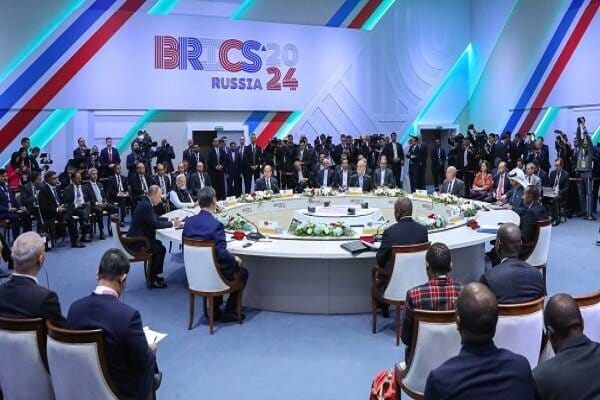BRICS’ attempt to bypass the US dollar/ “BRICS Bridge” plan put on the table.
At the recent BRICS summit in Kazan, Russia, the leaders of China, India, Iran, and Russia proposed the launch of a new payment system called the “BRICS Bridge” to bypass the US dollar as the current dominant currency in the world. Since its establishment in 2006, BRICS has set its main goal as a counterweight to the dollar-based economic and financial system.
Why are BRICS trying to replace the dollar
The BRICS’s challenge to the dollar is due to its strengthening of the United States. In fact, an important feature of the global economy after World War II has been the international role of the dollar. As the world’s most popular reserve currency, the dollar has accounted for the largest amount of global transactions. Today, the dollar accounts for approximately two-thirds of the world’s central bank foreign exchange reserves, and about two-thirds of international trade is conducted in this currency.
Institutions such as the International Monetary Fund and the World Bank rely on the dollar to conduct their activities, and countries rely on the dollar for their financial and monetary affairs, such as repaying loans, international trade activities, and storing their currencies in central banks. The international role of the dollar has helped to consolidate America’s global position in the economic and political arena. Variables such as economic strength and superiority, high political and military power, and a stable and trusted legal system have led to a widespread global trend toward the dollar, despite its relatively low interest rate.
Therefore, the United States, while possessing these unique characteristics and market capacities, has become a major center for attracting goods, services, and capital from other countries. However, despite America’s emergence as the leader of the world’s monetary regime, it seems that the country is facing problems in maintaining its global position, one of which is the BRICS mechanism.
According to data, by 2019, about 44% of foreign exchange turnover, 63% of foreign debt, 59% of international loan payments, 62% of world foreign exchange reserves and 40% of international payments were made in dollars. Also, in the foreign exchange market, the US dollar accounted for 44% of transactions; for example, in 2017, the share of the US dollar in foreign exchange reserves was more than 60%, while the euro accounted for 20% of reserves.
BRICS measures to replace the dollar
BRICS allows members to reduce their dependence on the United States. In this way, the bloc can curb US unilateralism and strengthen South-South relations. To this end, BRICS is pursuing various economic mechanisms to implement this initiative.
1. Creation of the New Development Bank
This bank was established by Brazil, Russia, India, China and South Africa to finance infrastructure projects in its member countries. It is a key successor to the International Monetary Fund and the World Bank, enabling developing countries to move away from the US dollar as their reserve currency.
2. Use of local currencies
The BRICS countries are working to reduce the monopoly of the dollar as the world’s reserve currency and have been trying to use their local currencies in regional trade.
3. Currency swaps
A currency swap is a tool to defend against financial turmoil and allows a country facing a liquidity crisis to effectively borrow money from others using its own currency. This instrument is a financial contract between two countries, under which they agree to exchange a specified amount of different currencies for each other. The main purpose of this contract is to manage the risks arising from exchange rate fluctuations. BRICS countries have been implementing currency swap agreements for the past decade to facilitate trade and investment and bypass the dollar. In 2013, Brazil and China signed a $30 billion currency swap agreement that allowed direct exchange between the Brazilian real and the Chinese yuan without relying on the dollar as an intermediary currency. This move has boosted bilateral trade and reduced dependence on the dollar in BRICS economies.

